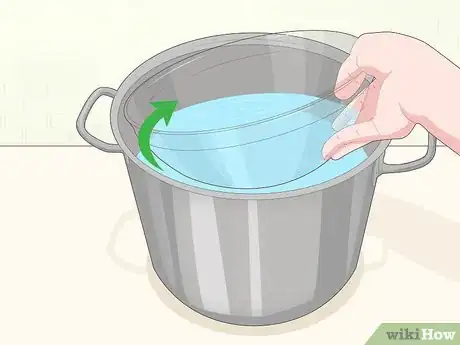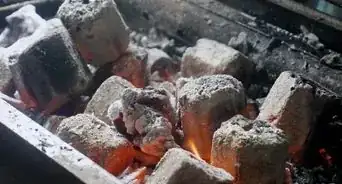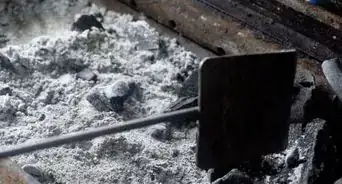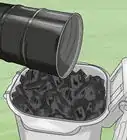This article was co-authored by wikiHow staff writer, Hunter Rising. Hunter Rising is a wikiHow Staff Writer based in Los Angeles. He has more than three years of experience writing for and working with wikiHow. Hunter holds a BFA in Entertainment Design from the University of Wisconsin - Stout and a Minor in English Writing.
There are 7 references cited in this article, which can be found at the bottom of the page.
Learn more...
Propane is a perfect energy source for your home, but how do you know when your tank is due for a refill? Since you don’t want your propane tank to ever empty completely, it’s important to check the levels with your tank’s gauge. Finding and reading your propane tank gauge is so easy, and we’ll walk you through everything you need to know. Keep reading, and you’ll be able to track your propane levels so you never run out.
Things You Should Know
- Propane tank gauges are usually numbered 5–95. Each number represents a percentage.
- Look at the number the dial on the gauge is pointing at. This is the percentage of your tank that’s filled with propane.
- Have your tank refilled when it dips below 20% full.
Steps
Reading the Gauge on a Large Tank
-
1Remove the dome cover from the tank. Your propane tank will have a cover regardless of if it’s above-ground or partially buried. Look for the plastic or metal cover on the top or end of your propane take. Simply lift off the cover and set it aside.[1]
- The cover helps protect the gauges and valves from damage.
-
2Check the number the dial is pointing at on the tank’s percentage gauge. The percentage gauge looks like a large speedometer and is usually numbered 5–95. Look what number the dial is pointing at. That number is the percentage of the tank that is still full of propane.[2]
- Propane tanks are considered full when they’re at 80%, even if the gauge goes higher. That gives the gas extra room to expand inside the tank during warm weather. Otherwise, the tank could burst.
- There are 2 gauges on a propane tank. The float gauge is the one you take a reading from and measures the liquid level of the propane. The fixed level gauge, or bleeder valve, is only used by a technician and lets out liquid when the tank is filled above 80% full.
Percentage Reading to Gallons Left in Tank
| Tank Sizes | ||||
|---|---|---|---|---|
| Gauge Reads | 120 US gal (450 L) | 250 US gal (950 L) | 500 US gal (1,900 L) | 1,000 US gal (3,800 L) |
| 80% | 96 US gal (360 L) | 200 US gal (760 L) | 400 US gal (1,500 L) | 800 US gal (3,000 L) |
| 70% | 84 US gal (320 L) | 175 US gal (660 L) | 350 US gal (1,300 L) | 700 US gal (2,600 L) |
| 60% | 72 US gal (270 L) | 150 US gal (570 L) | 300 US gal (1,100 L) | 600 US gal (2,300 L) |
| 50% | 60 US gal (230 L) | 125 US gal (470 L) | 250 US gal (950 L) | 500 US gal (1,900 L) |
| 40% | 48 US gal (180 L) | 100 US gal (380 L) | 200 US gal (760 L) | 400 US gal (1,500 L) |
| 30% | 36 US gal (140 L) | 75 US gal (280 L) | 150 US gal (570 L) | 300 US gal (1,100 L) |
| 20% | 24 US gal (91 L) | 50 US gal (190 L) | 100 US gal (380 L) | 200 US gal (760 L) |
| 10% | 12 US gal (45 L) | 25 US gal (95 L) | 50 US gal (190 L) | 100 US gal (380 L) |
Warnings
- Avoid letting your propane tank run empty since it could create leaks when you refill it. Propane technicians may have to perform an additional leak check before they can turn your gas back on again.[8]⧼thumbs_response⧽
References
- ↑ https://youtu.be/_xXvrrdKBqI?t=8
- ↑ https://youtu.be/AUQqjadfoho?t=26
- ↑ https://youtu.be/G6U_e7FrC2Y?t=7
- ↑ https://youtu.be/v4_m3pKhulI?t=63
- ↑ https://youtu.be/7sL-MXg-97U?t=71
- ↑ http://www.propanesafetyfirst.com/pdf/AmeriGas-Propane-Safety-Brochure.pdf
- ↑ https://www.phmsa.dot.gov/sites/phmsa.dot.gov/files/docs/propane_en_v3.pdf
- ↑ http://www.propanesafetyfirst.com/pdf/AmeriGas-Propane-Safety-Brochure.pdf





























































